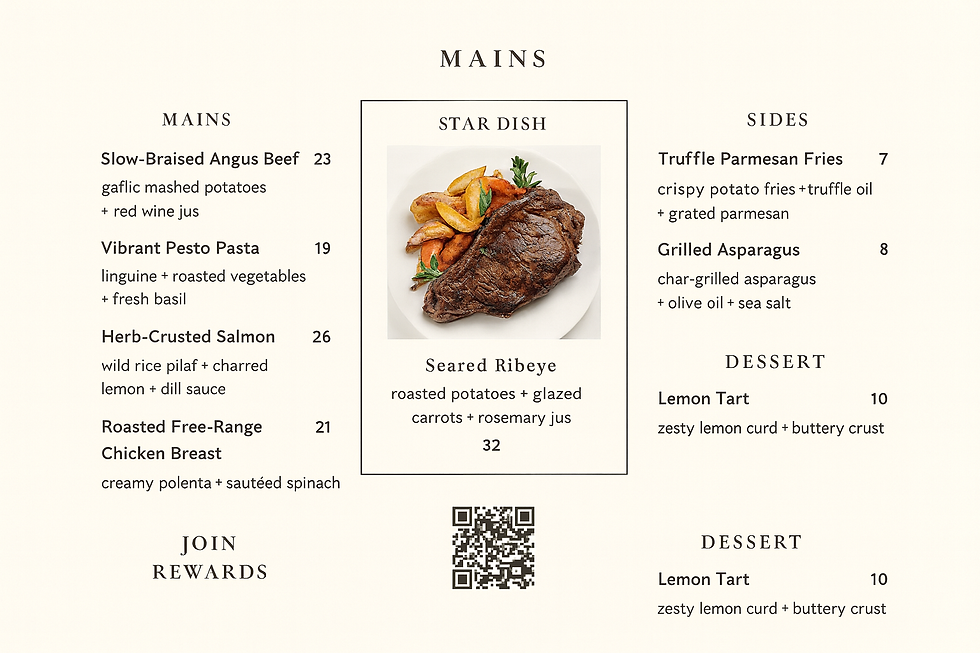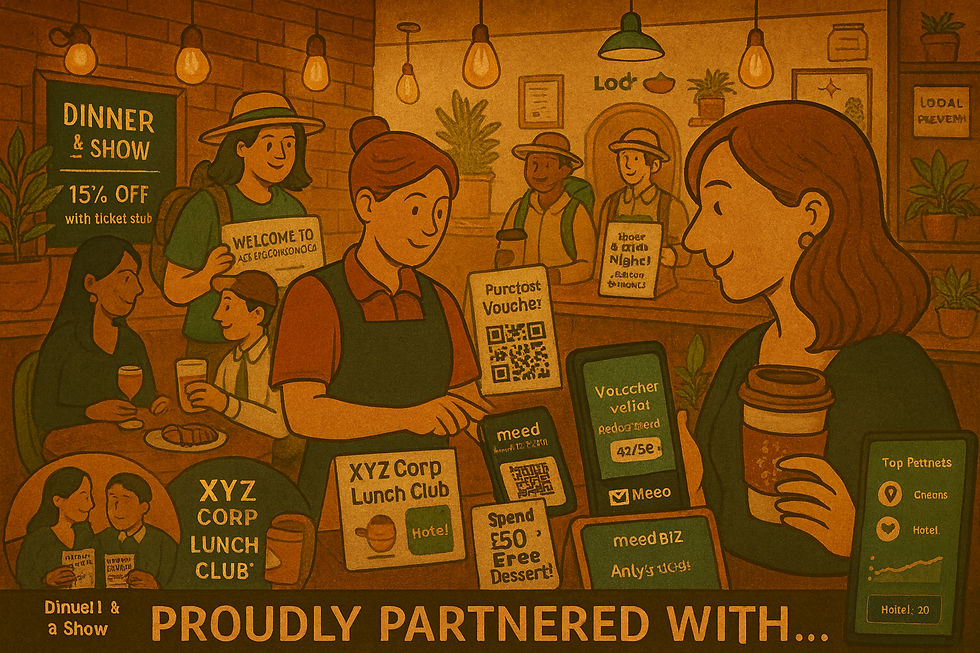How to Design Your Menu to Increase Profits
- Phil Ingram

- Aug 14
- 3 min read

Your menu is the most critical marketing tool you own. It’s more potent than any social media ad or flyer. It’s your number one salesperson, interacting with every single customer who walks through your door. Yet for many restaurants, it’s treated as a simple list of dishes and prices, an operational afterthought.
By applying a few proven principles of menu engineering and psychology, you can transform your menu from a passive list into an active, profit-generating machine. This isn't about tricking your customers; it's about guiding them towards your best and most profitable dishes, enhancing their experience while boosting your bottom line.
Here’s how to make your menu work as hard as you do.
1. Know Your Numbers: The Foundation of Menu Design
Before you can design anything, you need data. You must understand the profitability and popularity of every single item you sell. Analyse your sales data and categorise each dish into one of four groups:
Stars: High Profitability & High Popularity. These are your winners. Your signature dishes that people love and that make you good money.
Plowhorses: Low Profitability & High Popularity. These are your crowd-pleasers that don't make you much margin. Can you slightly increase the price, or reduce the food cost without sacrificing quality?
Puzzles: High Profitability & Low Popularity. These are hidden gems that you need to sell more of. Perhaps they need a better description, a new name, or a more prominent position on the menu.
Dogs: Low Profitability & Low Popularity. These are dragging you down. Be ruthless and consider removing them from the menu to make space for potential Stars.
This analysis is your strategic map. Your entire menu design should be geared towards highlighting your Stars and solving your Puzzles.
2. Guide Their Gaze: The Psychology of Layout
When a customer opens a menu, their eyes don't read it like a book. They scan. Studies show their eyes typically move to the middle of the page first, then to the top-right corner, and then to the top-left. This "Golden Triangle" is your prime real estate. Place your Star dishes here.
Use Boxes and Borders: An item placed inside a visual box will draw significantly more attention than anything else on the page. Use this tactic sparingly for one or two key Puzzle dishes you want to push.
Limit the Choices: The "paradox of choice" is fundamental. A menu with a hundred options can be overwhelming. A well-curated menu, with perhaps seven to ten items per section, makes it easier for customers to decide, leading to a better experience and faster table turnover.
3. The Power of Words: Descriptions That Sizzle
You’re not just selling food; you’re selling an experience. Your descriptions should reflect that.
Use Sensory Language: Instead of "Chicken with vegetables," try "Pan-seared free-range chicken breast with crisp, garden-fresh seasonal greens." Use words that evoke taste, texture, and aroma.
Tell a Story: Mention the origin of an ingredient or a unique preparation method. "Our signature slow-braised Angus beef, simmered for eight hours in a rich red wine jus." This adds perceived value.
4. Price with Purpose: The Subtleties of Cost
How you display your prices can have a significant impact on how customers perceive them.
Ditch the Currency Sign: Removing the "£" has been shown to make customers feel less like they are spending money, which can subtly encourage them to pay more.
Never Use a Price Column: Do not list your prices in a neat column down the right-hand side. This encourages customers to scan for the cheapest option. Instead, tuck the price discreetly at the end of the dish description, without a leading line of dots.
The Decoy: Place a costly, high-ticket item at the top of a section. This immediately makes everything else on the page look more reasonably priced in comparison.
5. The Final Touch: Integrate Your Loyalty Program
Your menu is the perfect place to get customers into your loyalty ecosystem before they’ve even ordered. Don't wait until the bill comes.
Add a small, well-designed box with your meed location QR code directly onto the menu. Use a clear call to action: “Join our Rewards Club now! Scan the code to get your digital pass and be ready to earn on today’s meal.”
This is a brilliant tactic, especially if you're using a system like SCAN by meed, where customers can scan their receipt to earn rewards. By getting them to sign up while they're browsing the menu, the process is sorted. When the bill comes, they’re already a member and ready to scan, making the entire experience seamless.
Your menu is your silent salesperson, working tirelessly every single service. Give it the strategic attention it deserves, and it will reward you handsomely.





Comments